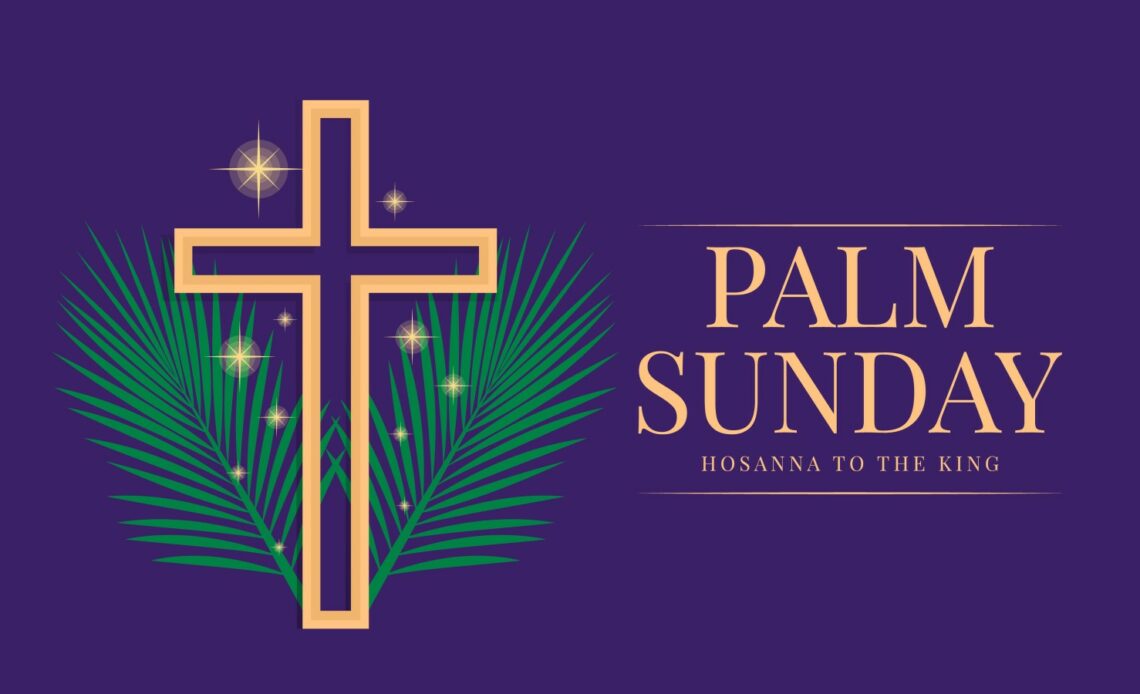Exactly one week before the resurrection of Jesus, His ceremonial entry into Jerusalem is observed. Palm Sunday is the first day of the Holy Week as depicted in Matthew 21. It had been a very long journey that Jesus knew was coming to an end. He was about to hang on the cross, and He was making his way to Golgotha, which is also known as the place of the skull.
He entered the holy city as the final part of His journey. According to Luke 19:10, He had come so that all might have abundant life and to save all the lost souls. However, the fulfillment of the plan was about to unfold. This was the location His father had secured for the ultimate redemption plan to be revealed, but no one knew other than Jesus what was about to happen.
The final seven days of the Saviors life on earth is called Passion Week. The last days, hours, and minutes of Jesus’s journey in his earthly ministry were ending. While Palm Sunday is a reason to celebrate, it was officially the beginning of the end in the Biblical timeline of His life. It’s easy for us to commemorate this day, but back then the people didn’t know all that was going to take place.
The Journey Over the Mount of Olives
This day starts with Jesus, and the chosen disciples making the pilgrimage across the Mount of Olives. Consequently, when He returns once again to take His bride home, this famous mountain will split in half according to Zechariah 14:4 Scripture foretells that He will step His foot upon the mountain, and it will separate from the east to the west.
To complete this journey, He needed an animal to ride through the streets of the city. He sent two of His 12 disciples into a small village called Bethphage to find an animal to carry Him. In Luke 19:29–30, Jesus told the men that they would find an unbroken colt, and just as He foretold, they found the perfect animal just waiting to transport the Lord.
The owners didn’t fight the men at all when they told them that Jesus needed it, as is found in Luke 19:31. They gladly handed over the donkey for the Master to use. The disciples brought the animal to Jesus, put their cloaks on top of it, and then Jesus got situated for His iconic ride found in Luke 19:35.
The Crowds Worshiped Jesus
A crowd would gather anywhere that Jesus went, and this day was no different. As He made his way into the holy city of Jerusalem, the group quickly formed to see what was going on. The people knew that He was the Messiah, but they didn’t comprehend that it was time to fulfill His purpose on Earth.
Jesus tried to tell them about His Father’s master plan in Luke 19, but they didn’t fully understand what would unfold. As the crowd gathered out of curiosity and respect, they threw their cloaks in the road. It was their way of honoring Jesus, even though their mortal minds couldn’t understand the gravity of the situation. They wanted to show admiration for a man they had come to admire, whom they also believed would save them.
It wasn’t enough to throw their cloaks in the road, but they also waved cut branches from trees, as found in Matthew 21:8. It was their way of honoring Him and treating Him as royalty. Ironically, this wasn’t the first time the Bible mentioned such treatment for a king, as in 2 Kings 9, the people did the same thing for King Jehu during his coronation celebration.
In John 12, it’s identified that the branches they cut were from palm trees and not just any old tree they could find. This is significant as the palm is a smaller tree with gigantic leaves that would provide a breeze to the savior, as it was no doubt hot in that city. Paradoxically, the Bible speaks about waving your hands or “palms” to Him in worship today, which makes the entire seen that unfolded that day ironic and a foreshadow of the future.
To praise Him for what He was about to do and all He had already become to them, the people began to sing and shout in worship. In Matthew 21:9, it says that the crowd sang, ‘Blessed is he who comes in the name of the Lord!’ The prophecy of Christ was being fulfilled, and His people, the Jews, were audibly quoting the scriptures or songs found in Psalm 118:25–26.
The reference to the Messianic hymns attracted anger from the religious leaders present that day. Of course, there were Pharisees in that crowd too, and they instructed Jesus to rebuke the disciples for their conduct. Consequently, Jesus didn’t care what the Pharisees had to say on this day or any other, and He told them in Luke 19:40 that if they didn’t praise Him, He would cause the stones to cry out instead.
Jesus was always known to “ruffle a few feathers” in His journey on earth, as He was a man who spoke truth and didn’t sugarcoat things. Though He loved the Pharisees, He loathed their attitudes. Throughout the Bible He spoke to them constantly point the finger at others when they needed to examine their own hearts.
The Prophesy of Zechariah
Zechariah was a minor prophet found in the Old Testament, and he foretold of the arrival of Jesus in Jerusalem in Zechariah 9:9. He spoke in detail about the event, now called Palm Sunday. His words “See, your king comes to you,” didn’t mean much at that time, but it had significant meaning as things came to pass.
Palm Sunday, unlike other parts of the Lenten season, was a time of rejoicing. Jerusalem was excited as the masses gathered together to welcome their King. The people needed a Messiah to save them, and Jesus was an answer to their prayers. Though the citizens wanted help with politics and national freedoms, Jesus was only concerned with their souls.
Sadly, the multitude was so excited to see Him and believed He was their salvation, but they missed the entire reason for Him being there. The common man can’t understand the mind of Christ. In Luke 19:41-47, Jesus cried as he entered the city of Jerusalem because He knew that though He would suffer, it would bring peace to the people.
Though they saw the Savior, they didn’t truly understand or recognize who He was to them. It’s also important to note that on Palm Sunday, the people were shouting “Hosanna” to Jesus, but things had taken a drastic turn for the worse by the end of the week. After the Last Supper, the crowds were yelling for officials to Crucify Him, as found in Matthew 27:22.
Though the Holy Week starts with Palm Sunday, it’s quite a roller coaster ride for not only Jesus but those who followed his earthly ministry. All things had great purpose, and in Philippians 2:10–11, it states that He will once again return to the Earth to claim the people that are His.
This time when He comes, every knee will bow and confess that He is Lord, and there will be no Sanhedrin court to try Him for crimes He didn’t commit. The worship will be quite different as so many are anxiously awaiting His return.
In Revelation 7:9, John saw people from every tribe and nation standing around the throne. Once again, the worshipers held palm branches in their hands as they praised the King of all Kings. This time, the crowd would be wearing white robes as they would reign with Him.
Prayer
As Holy Week kicks off with the celebration of Palm Sunday, let me not forget that your iconic journey was meant to save your people. You took on a robe of flesh and was tempted and tried by men in all ways. However, when you come back the next time, I will wear a robe of white to reign with you forevermore.
Jesus, I am forever grateful for all you’ve done for me, the sacrifices you made, and the pain you endured. You’re forever my King and the one worthy of all my praise.


